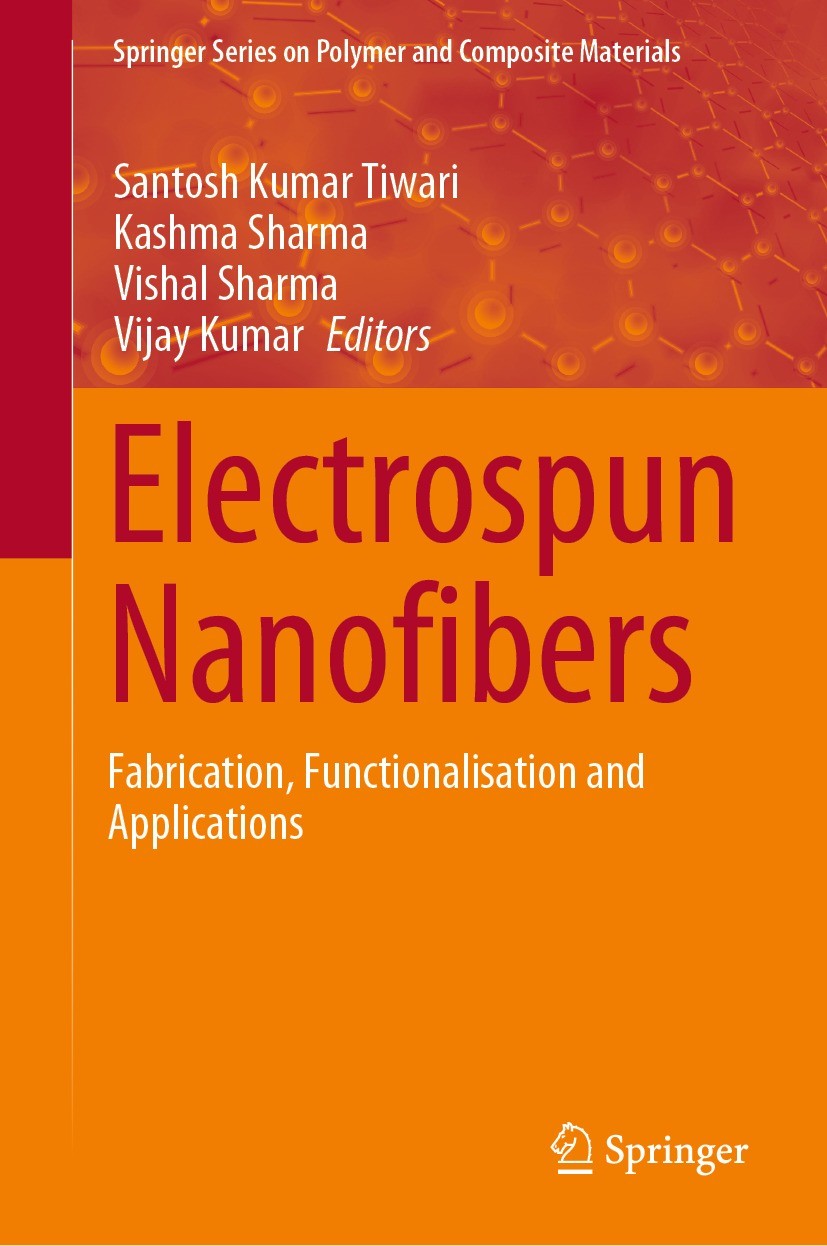| 书目名称 | Electrospun Nanofibers |
| 副标题 | Fabrication, Functio |
| 编辑 | Santosh Kumar Tiwari,Kashma Sharma,Vijay Kumar |
| 视频video | http://file.papertrans.cn/307/306548/306548.mp4 |
| 概述 | Overview of recent advances in electrospun nanofibers.Presents applications of electrospun nanofibers.Useful reference for new researchers |
| 丛书名称 | Springer Series on Polymer and Composite Materials |
| 图书封面 |  |
| 描述 | .The book provides an up-to-date account of the various techniques of fabrication & functionalization of electrospun nanofibers as well as recent advancements. An overview of the advanced applications of such techniques in different areas is also presented. Both experimental and theoretical approaches related to electrospun nanofibers are covered along with a discussion on the inherent properties of electrospun nanofibers. Therefore, this book provides a unique resource not only to established researchers but also newcomers starting out in this field.. |
| 出版日期 | Book 2021 |
| 关键词 | Nanofibers; Electrospinning; Functionalization; Carbon Nanofibers; Electrospun Nanofibers; Graphene Based |
| 版次 | 1 |
| doi | https://doi.org/10.1007/978-3-030-79979-3 |
| isbn_softcover | 978-3-030-79981-6 |
| isbn_ebook | 978-3-030-79979-3Series ISSN 2364-1878 Series E-ISSN 2364-1886 |
| issn_series | 2364-1878 |
| copyright | The Editor(s) (if applicable) and The Author(s), under exclusive license to Springer Nature Switzerl |
 |Archiver|手机版|小黑屋|
派博传思国际
( 京公网安备110108008328)
GMT+8, 2025-11-17 00:35
|Archiver|手机版|小黑屋|
派博传思国际
( 京公网安备110108008328)
GMT+8, 2025-11-17 00:35


